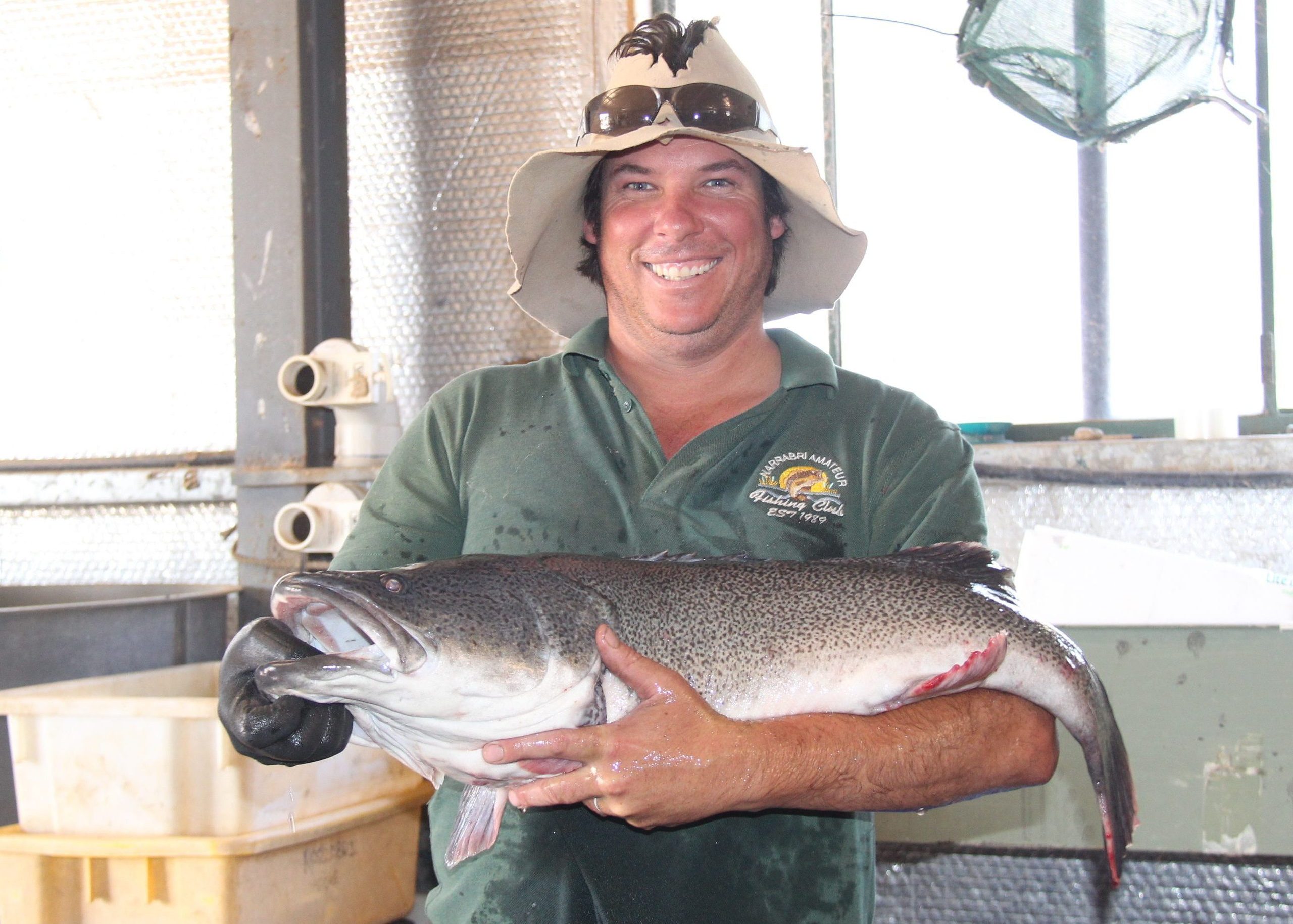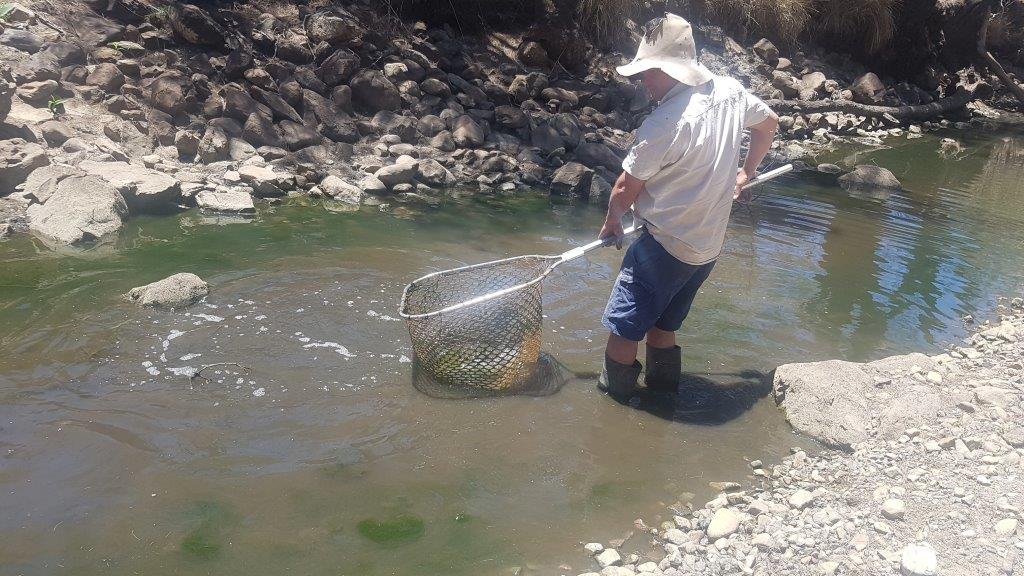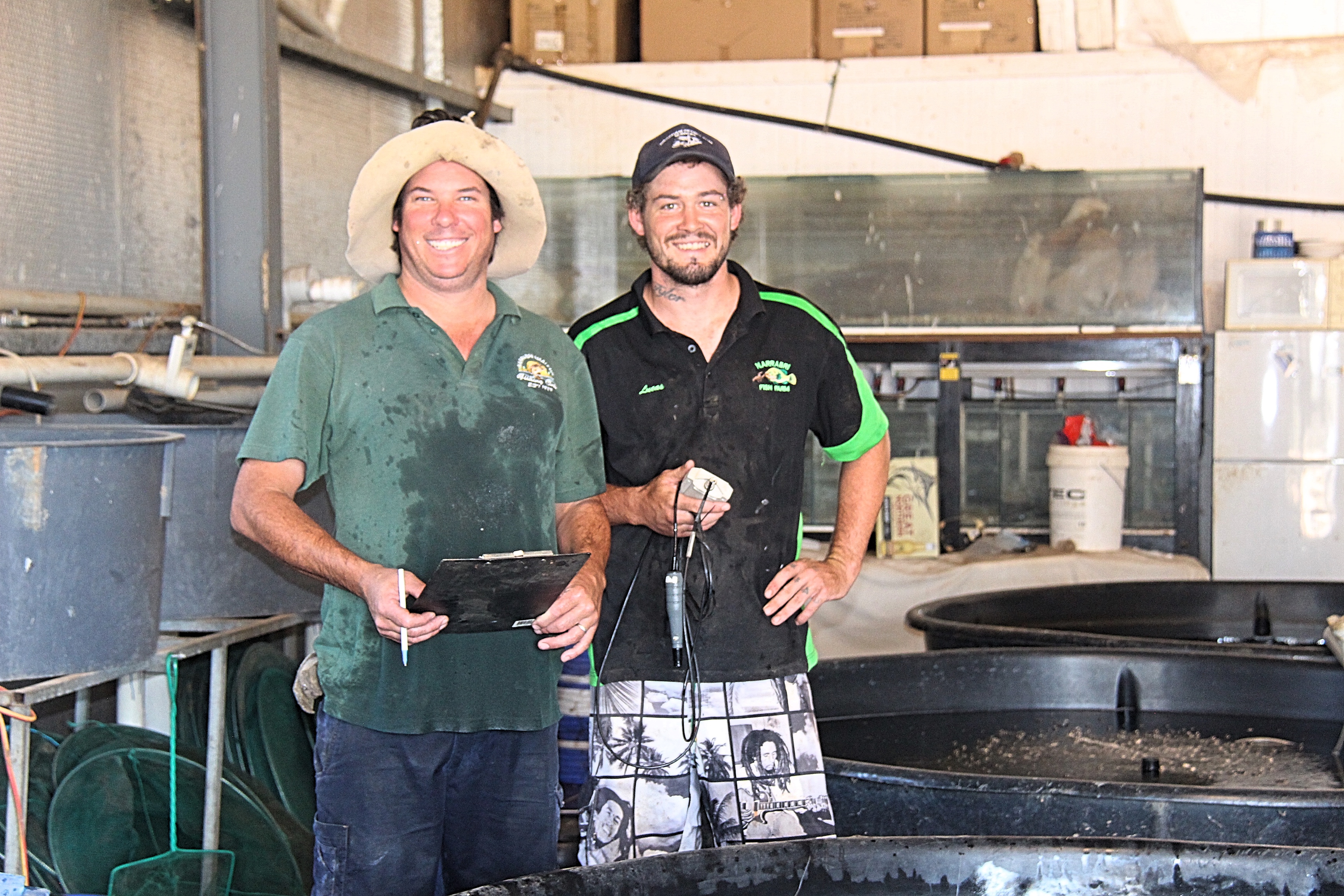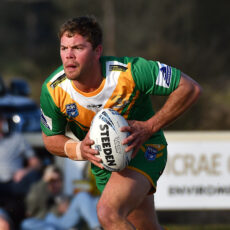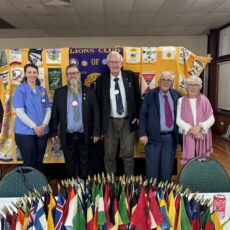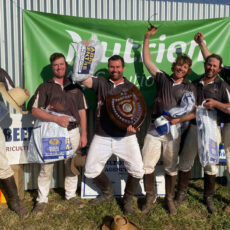The distressing impact of the drought on animals and wildlife is becoming clearer every day as temperatures soar and rain fails to fall.
However, the future of some fortunate fish in the Namoi, Gwydir and Macintyre waterways is a little brighter thanks to a rescue mission that’s currently underway.
“We’re checking a lot of the water holes that are drying up and pretty much trying to save any stressed fish that are looking like they might perish in the hot water,” said Narrabri Fish Farm owner Rick Cunningham.
“We’re checking for fish that are still alive and kicking and bringing them back here, putting them through quarantine, giving them a marker, a chip number and allowing them to live out here until the rivers come good again and then we’ll put them back where they came from.”
The Courier asked Mr Cunningham if his water storages were a temporary ‘sick bay’ for the fish?
“No, it’s more like a resort – five star,” Mr Cunningham added with his signature smile.
“We monitor all the ponds every week and go past them daily to check everything is working, running and aerating.
“We do weekly feeds – so every three days for the Murray cod and every day for the golden perch, the silver perch, the catties and all the baby stuff.
“We’re a hatchery so we’ve got hundreds of thousands of babies at the moment.”
Mr Cunningham, local fishing clubs and other volunteers have been conducting the fish rescues with the authorisation and support of the Department of Primary Industries through the NSW Native Fish Drought Response program.
“So the DPI have put in an application for the hatcheries to look after some fish in the area,” said Mr Cunningham.
“It’s Murray cod mainly, I haven’t seen any golden perch, seen a very small amount of catfish – I tend to think they have a defence mechanism and can burrow into the ground the same with the really big Murray cod but the juvenile stuff that’s say around 10 to 20 kilos mustn’t have that instinct yet, they’re the ones that seem to be dying first.
“It’s getting hot now so we’re trying to get out there in the next week or two and save as many as we can before we hit two weeks of 40 degrees and it kills everything.”
Mr Cunningham estimates that he and his team have saved about 110 fish so far and as a die hard fisherman it’s a cause close to his heart.
“I love my fishing and love my fish,” he said.
“I’ve been a keen fisherman all my life, it’s hard to see the fish dying in holes.
“A lot of people – fishing clubs, fishermen – they’re keen to see the bigger fish go back into the holes so the kids have got a chance to hook up on a good fish in the future.
“We’ve got a good mob of bigger fish around that five to 15 kilos that’ll be good on the end of a fishing rod, I can tell you,” he added.
“It won’t take long for it to start thriving again, once the rivers start running.
“But when you’re seeing this big drought run through the country it’s hard, everyone is ringing me up in regards to holes that are in danger.
“It’s good to be in the middle of it especially because I can push the holes to the DPI and get to the right avenues quicker and get the fish saved.
“We can’t save everything, but at this stage we can try to save as many as we can.”
Mr Cunningham has collected data on each fish so they can be put back in their original water holes.
And he agreed that the data collection process is so thorough that it’s possible he knows more about the fish than his own family.
“Well yes, I’ve never taken a fin clip out of my kids but I might think about giving them a microchip actually.
“Every fish is microchipped and fin clipped. We do a DNA fin clip for genetic reasons.
“We know what fish is in what pond and all the information is pushed through to the DPI so they know what dams that I’m holding them in.”
Mr Cunningham grew up in the area and knows the waterways like the back of his hand but said we are in uncharted territory with these dry conditions.
“But I’m not saying that it’s never happened before.
“We’ve only really had flowing rivers since we made the big dams. Two hundred years ago it used to just be holes until they started building dams for irrigation.
“So now we’ve built a system where the waterways are managed and so are the species in it.”
Mr Cunningham said accusations that irrigators are to blame for fish deaths are just plain wrong.
“Definitely not right,” he said.
“Back in the day, certain dams were built strictly by cotton farmers. So the dams wouldn’t be there unless it was for the cotton farmers.
“The people that are voicing their opinions these days probably don’t even know that.
“But I don’t like getting into the politics of it all,” said Mr Cunningham.
“It seems like it started off with a bit of mismanagement from whoever and now the cotton farmers are the ones who have been taking flack.”
For now, more than 100 fish are in safe hands and in a safe haven at ‘Ricko’s fish resort’ until the river is healthy enough for them to return home.
“If it doesn’t rain for three years, well they’ll be here for three years.
“I don’t want to put them back until the river is thriving again. There’s no use putting them back in when it’s not right.
“They’ll stay in the resort for a couple of years.”
If people see fish in distress they are encouraged to contact the DPI via email: [email protected]


